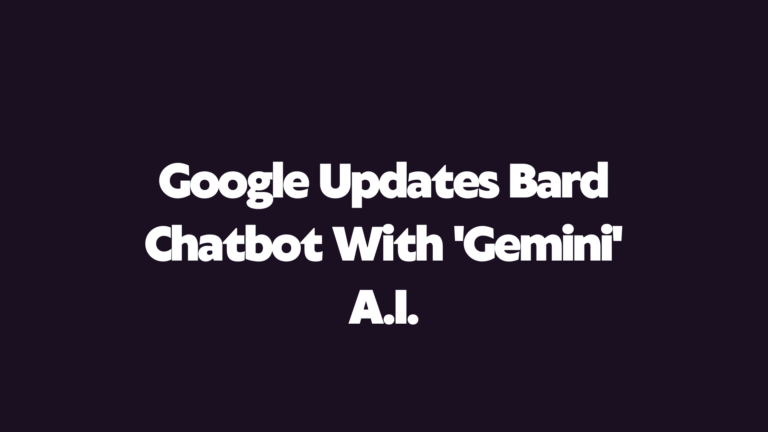Mastering Search Intent: Unlock the Full Potential of Your SEO Strategy
As the world of SEO keeps changing, it’s become important for any successful SEO campaign to understand what people mean when they search.
By catering to your audience’s needs and tailoring your content to match their search queries, you can improve your search rankings and establish your brand as a trusted authority in your industry.
In this comprehensive guide, we’ll explore search intent, how it impacts your SEO campaigns, and the practical steps you can take to optimise your content for search intent. Let’s dive in!

What is Search Intent? 🔍
Search intent, often called user intent or query intent, is a user’s underlying goal when typing a search query into a search engine. It’s the reason behind their search and what they hope to achieve with the information they find.
Understanding the user’s search intent allows you to create content that meets their needs. This will help you increase search engine rankings and get more traffic from natural searches.
Why Search Intent Matters for SEO 🚀
Search intent is crucial for SEO because search engines like Google aim to provide users with the most relevant and valuable content for their queries.
Making content that matches what people are looking for makes your site more likely to rank higher in search engine results pages (SERPs) and get more organic traffic.
Also, knowing the user’s search intent and responding to it can improve the user experience, increase engagement, and boost conversions.
When users find content that meets their expectations and answers their questions, they’re more likely to stay on your site, explore other pages, and take desired actions, such as purchasing or subscribing to your newsletter.
The Four Types of Search Intent 💡
Search intent can be classified into four main categories. Recognising these categories can help you better understand your target audience and create content that meets their needs.
- Informational Intent: Users looking for information want to find answers to questions or learn more about a subject. Examples of informational queries include “how to change a tire” or “what is the capital of France?”
- Navigational Intent: The term “navigational intent” refers to searches that try to find a certain website or page. A user with navigational intent might search for “Facebook login” or “YouTube trending videos.”
- Transactional Intent: Users who want to buy something or do something specific online have “transactional intent.” Examples of transactional queries include “buy running shoes online” or “book a flight to New York.”
- Commercial Investigation Intent: Users with this type of intent look into a product or service before deciding to buy it. Queries like “best DSLR cameras” or “top web hosting providers” indicate commercial investigation intent.
Identifying Search Intent in Keywords
To optimise your content for search intent, you must first identify the intent behind your target keywords. Here are some strategies to help you uncover search intent:
Examine the search query: Look for clues within the keyword or phrase itself. Informational queries often include words like “how,” “why,” or “what,” while transactional queries may include terms like “buy,” “order,” or “sign up.”
Analyse the SERPs: Perform a Google search for your target keyword and examine the top-ranking pages. The type of content and format of these pages can provide valuable insights into the search intent.
Use keyword research tools: Utilise SEO tools like Google Keyword Planner, Ahrefs, or SEMrush to gather data on search volume, competition, and related keywords, which can help you better understand the intent behind your target keywords.
Optimising Content for Search Intent👇
.png)
Once you’ve identified the search intent for your target keywords, you can optimise your content accordingly. Here are some best practices for creating content that caters to different search intents:
- Informational Intent
Provide comprehensive, well-researched, and accurate information. Use clear headings and subheadings, bullet points, and numbered lists to make the content easy to navigate. Add relevant photos, videos, or infographics to back up your points and make the user’s experience better. Aim for long-form content that covers the topic in-depth and addresses all potential user questions.
- Navigational Intent
Make sure your website is easy to use and has clear navigation menus, search bars, and internal links that are easy to find. Optimise your title tags, meta descriptions, and URLs to include the target keywords and help users find your site quickly.
- Transactional Intent
Make product or service pages that are convincing and interesting by highlighting the unique selling points, benefits, and features. Include clear calls-to-action (CTAs), customer reviews, and testimonials to build trust and encourage conversions. Optimise your site for mobile and ensure a seamless checkout process.
- Commercial Investigation Intent
Produce detailed comparison posts, product reviews, or buying guides that help users make informed decisions. Include relevant data, statistics, and pictures to back up your claims, and keep a neutral tone to show that you can be trusted.
Measuring the Success of Your Search Intent Strategy
Track the following key performance indicators (KPIs) to figure out how well your search intent optimisation is working:
Organic traffic
Keep an eye on how your site’s organic traffic changes, as higher search rankings should make your site more visible and bring in more visitors.
Bounce rate
A lower bounce rate indicates users find your content valuable and relevant to their search queries.
Dwell time
Longer dwell times suggest that users engage with your content and find it helpful.
Conversion rate
Keep track of how many of your site’s visitors do what you want them to do, like buy something or sign up for a newsletter. Optimising search intent should lead to higher conversion rates.
Keyword rankings
Monitor your target keyword rankings in the SERPs to see if your optimisation efforts improve your position.
Adapting to Search Intent Trends and Evolving Algorithms

To keep and improve your SEO performance, you must stay on top of search intent trends and adapt to changing search engine algorithms. Keep the following tips in mind to ensure your content stays relevant and optimised for search intent:
- Monitor search trends
Use tools like Google Trends, Ahrefs, and SEMrush to identify emerging trends, popular topics, and seasonal fluctuations in search behaviour.
- Stay up-to-date with algorithm changes
Follow industry news and subscribe to SEO blogs and newsletters to stay informed about updates and changes to search engine algorithms.
- Conduct regular content audits
Check your existing content every so often to ensure it’s still accurate, useful, and in line with what people seek. Update outdated information, add new insights, and remove low-quality or irrelevant content.
- Analyse user feedback
Gather and analyse feedback from your site visitors through comments, surveys, and social media interactions to identify potential gaps in your content and uncover new search intent opportunities.
- Test different content formats
Try out different types of content, like blog posts, videos, infographics, and podcasts, to find out what your audience likes best and their search intent.
By being proactive and always tweaking your search intent strategy, you can make sure that your content is still useful and relevant to the people you want to reach. This will help you keep your search rankings high and keep getting organic traffic to your site.
Final thoughts on search intent
Mastering search intent is key to unlocking the full potential of your SEO strategy.
By understanding the different types of search intent, identifying the intent behind your target keywords, and optimising your content accordingly, you can
- Improve your search rankings
- Attract more organic traffic
- Drive conversions.
Stay ahead of the competition by continually analysing user behaviour, tracking KPIs, and adapting your content strategy to meet your target audience’s ever-changing needs and preferences.
With a good search intent strategy in place, your brand will become a trusted authority in your industry, and your online presence will continue to grow.




